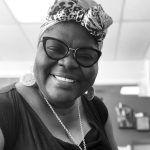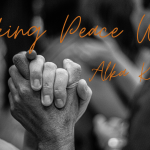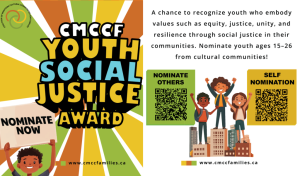
Newcomer Youth: Perspectives of Peace
I had wrapped up my story for this edition, ready to share it, when a chance encounter shifted my focus entirely. Walking through Central Park in Winnipeg, I was enjoying the warmth of an unusually pleasant late October day. This year, it seemed, Winter and Summer were battling for dominance, as warm days keep coming up. The forecasters had predicted warmth, and they were right—it was perfect weather for a walk and to take in the beautiful colors of Fall.
Consumed in the seasonal shades of colours, I happened to meet three teenagers, two are siblings and one is their mutual friend. I had missed my way and asked them about the street I was searching for. They kindly offered to walk with me since they were headed that way. So, with an easy trust, I followed. As we chatted, I learned that the siblings had come here many years ago from their home country for vacation and simply never left and the third, his family had migrated intentionally. Our conversation flowed naturally, as if destiny itself had brought us together to share stories about peace, resilience, and adaptation
As we walked, I learned that they had been here for over ten years. Why did you move to Canada? I asked, not knowing that a simple question would open the door to an unexpected story.
The older sibling, Antonio chuckled, “Actually, we didn’t exactly plan to stay. We came for a vacation, and after two months, our parents decided we weren’t going back. We don’t know why the change of heart, but it worked out; now we are citizens here.” They were only seven and eight then, and today, at eighteen and nineteen respectively, they’ve fully adjusted to their Canadian lives.
Curious, I asked if they felt at peace here. Giovanni (younger to Antonio) replied thoughtfully, “Peace… that’s a complicated word.” We ended up at a nearby Tim Hortons to continue the conversation, each of us with a cup of hot chocolate in hand.
“Peace for me isn’t just the absence of war,” said Antonio, wrapping his hands around his chocolate drink. “When we first arrived, things were exciting because we didn’t come to stay but things take a different turn as soon as my parents decided we were not going back. We suddenly realised we didn’t speak English good enough to socialize as we did back in our home country. Everything—daily interaction felt suddenly strange. My parents didn’t speak much English, and school was overwhelming. But peace, I realized, was a feeling deep within, a kind of trust that things would improve. It was this hope that kept us going.”
Giovanni’s definition of peace had evolved from survival to empowerment: “Now, peace is the freedom to define who I am—not by where I came from, but by where I’m headed.”
Ivan on the other hand, had come from Venezuela. He looked pensively at his drink as he shared, “I used to think peace was something only found in countries without war. But even here, my family had their struggles. We weren’t fleeing violence, but we were searching for greener pastures.”
He went on to explain that for him, peace was the ability to “dream without fear”—to walk down the street without feeling judged, to feel accepted despite his accent. Over time, peace became more personal for him “Now, I think peace is when you feel secure in your own terms, wherever you are.”
Perspectives on Peace:
For the trio who are teenage immigrants with different backgrounds, the concept of peace is both a personal journey and a shared vision. Despite their diverse experiences, they offer insights on how young people can build more peaceful communities.
How we can promote peace as teenagers:
The three boys believe that teenagers have the ingenuity and character to shape peaceful communities by taking the following steps.
- “Non -Judgmental safe spaces”: They believe young people can lead the way by fostering environments where everyone feels safe to share, learn, and connect. Ivan suggests creating cultural clubs in school to celebrate diversity and bridge divides.
- “Education/Information/ communication”: The trio advocates for more cultural awareness in schools, from adding inclusive history lessons in the curriculum to discussions on social justice. This education, they believe, can help students appreciate and understand each other’s backgrounds.
- “Conversation groups”: All three boys feel peace starts with identification. Sharing migration stories can help others grasp the challenges of adapting to a new life. They suggested story-sharing circles or “open mic” events that promote connection and understanding.
- “Solidarity/Allyship”: Antonio stress the importance of standing up against stereotyping. He says, “By standing up for one another, we as teens can challenge microaggressions and unconscious bias and help build a community where everyone feels valued”
- “Mental Well-being”: Ivan highlights that mental health is fundamental to peace. Initiatives such as mental health clubs in schools and peer educators can create an inclusive community where everyone feels a sense of belonging.
As our conversation deepened, I paused, captivated, thank you for sharing your thoughts on promoting peace, I said. Now looking at the other side of the coin, what do you think are the challenges to achieving peace.
For me, Antonio replied, “my dual Identity makes me feel a connection to my Italian roots even though I strive to embrace Canadian culture”. Similarly, Ivan feels pulled between his Venezuela heritage and his life in Canada. “This dual identity can lead to isolation, as we try to fit in without losing ourselves”. Echoed the three boys
“Exclusion is another challenge,” Giovanni shared. “Sometimes we’re left out of group conversations because people think we’re too forceful in how we express ourselves.” The others nodded in agreement, reflecting on how often they felt out of place in social settings where they were viewed as “different.” Despite now calling Canada home, each had felt the sting of being an outsider.
Curious, I asked, “Is that why you’re all friends with Ivan?”
They responded in unison, “Yes! In solidarity, we stick together. At school, we hang out, support each other, and stand up for one another.”
Giovanni explained, “We noticed Ivan often kept to himself, and people would make fun of his accent, just like they did with us.”
That’s wonderful to hear, I said. You have been in the same school all these years, and now you’re heading to the same university together?
Ivana nodded in agreement, “Yes, we are! We’ve come this far together, and we’re excited to keep supporting each other as we move forward.”
Although they’ve adapted to their new environments, they feel pressure to abandon their heritage in favour of Canadian culture. Ivan mentioned that his traditions sometimes feel less valued, “sometimes I have to hide part of myself to feel accepted, which is really hard for me”. “This has impacted our sense of peace in the country we call home.”
Their Shared Vision for a Peaceful Community
As they shared, I sensed a deep bond in their understanding of peace, for Ivan is a world where people express themselves without fear of judgment. “It’s about creating a space where no one feels pressured to hide or change who they are.” Antonio adds, “Peace is more than the absence of conflict; it’s the presence of kindness” For Giovanni peace meant “hope and liberation”
They hope that by encouraging kindness and allyship young people can build communities where everyone, regardless of origin, feels at home. Together, they envision a peaceful world, one small act of humanity at a time.
As they left, I felt my reflections linger—a quiet demonstration of resilience and hope.

This article was written by community writer Patricia Eyamba as part of our J.E.D.I. Initiative – Community Writers Project. All thoughts and opinions expressed are Patricia’s own.
To learn more about our Building Bridges Peace Project, please click: here

 Previous Post
Previous Post
